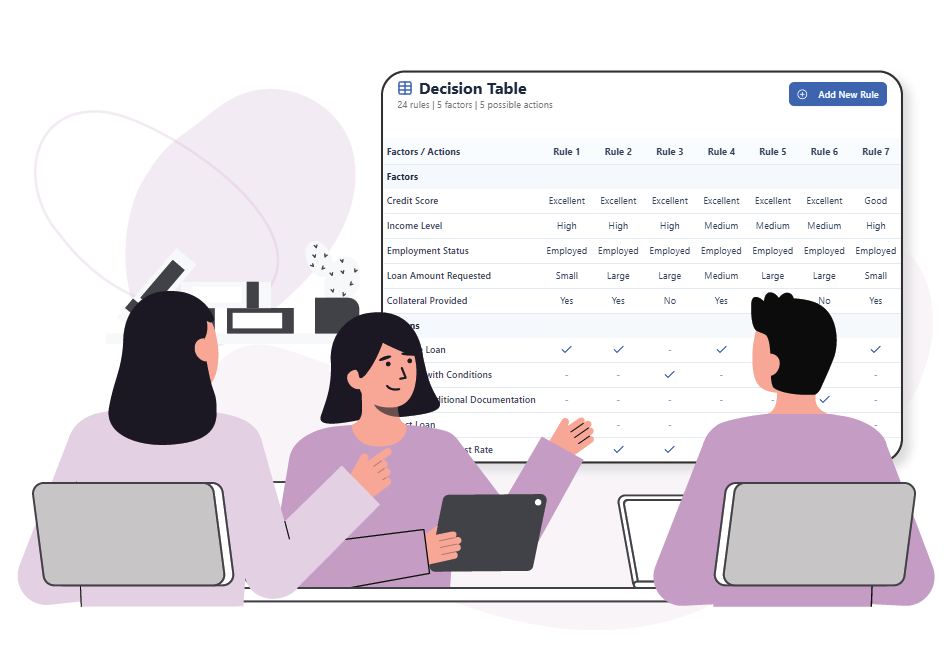Now Reading: Decision Table Case Study: Streamlining the Loan Approval Process
-
01
Decision Table Case Study: Streamlining the Loan Approval Process
Decision Table Case Study: Streamlining the Loan Approval Process
The Challenge
A major regional bank’s consumer lending division was hampered by a slow, paper-based loan approval process that took three to four weeks on average. This inefficiency led to high application abandonment, poor customer satisfaction, and increased risk due to human error. The bank’s lending staff spent more time on administrative tasks than on client relations, highlighting the urgent need for a complete workflow overhaul to stay competitive.
The Solution
To address these issues, the bank initiated a digital transformation project aimed at creating a fully automated, end-to-end loan approval platform. The core of the new solution was a custom-built digital portal that served as the central hub for the entire process.

Digital Application and Document Submission
The paper-based forms were replaced with an online application that could be accessed from any device. Customers could securely upload all necessary documents, such as pay stubs, bank statements, and tax returns, directly through the portal. This eliminated the need for physical paperwork and mail.
Automated Data Verification
Upon submission, the system instantly verified the applicant’s identity and financial data. It automatically pulled credit reports, cross-referenced income information, and used a set of pre-defined business rules to check for basic eligibility requirements. This initial stage, which previously took days, was now completed in seconds.
A Rule-Based Decision Engine:
The most impactful feature was an automated decision engine. This tool used advanced data analysis and a tiered system of pre-programmed rules to evaluate applications. Based on an applicant’s credit score, debt-to-income ratio, and other key financial indicators, the engine could immediately approve, deny, or flag an application for further human review. Only complex cases—those falling outside of the automated rules or requiring deeper analysis—were escalated to a human loan officer.
The Results
The implementation of the new automated platform produced dramatic improvements across the board.
Transforming Operations and Productivity
The new system revolutionized the bank’s operational speed, cutting the average loan approval time from weeks to just a few minutes for simple applications. By automating data collection and initial reviews, the bank’s staff was freed from tedious tasks, allowing them to focus on high-value activities like building client relationships and providing expert financial advice. This shift led to a significant increase in productivity and a near-total reduction in human error, ensuring consistent and reliable decisions.
Enhancing the Customer Experience
The rapid, transparent, and streamlined process dramatically improved the customer experience. Applicants could now track their application status in real-time, and the quick turnaround time led to a marked increase in positive feedback and customer loyalty. In conclusion, this case study shows that using a digital-first, automated approach not only solves efficiency problems but also fundamentally transforms a business, making it more competitive and customer-centric in the digital age.

